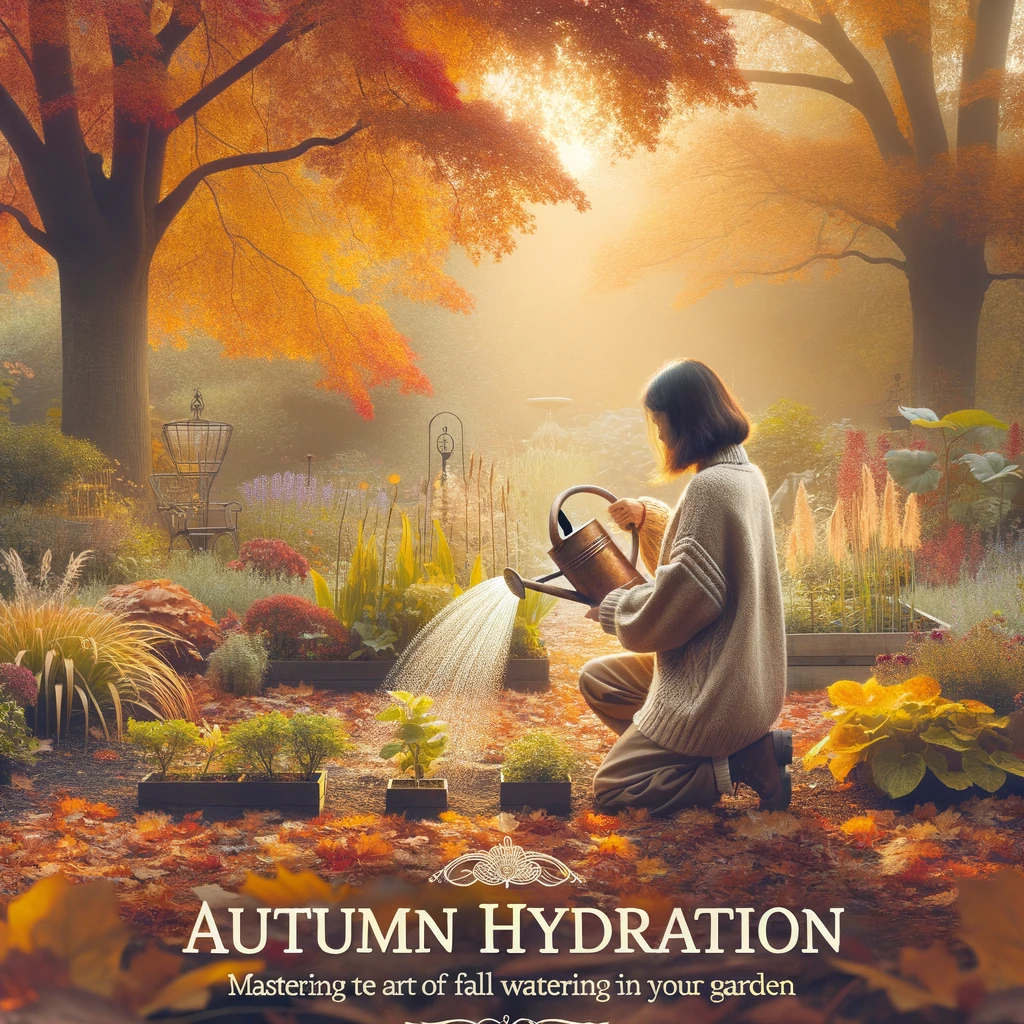
Autumn Hydration: Mastering the Art of Fall Watering in Your Garden Leave a comment
Watering Plants, Shrubs, and Trees in Winter: A Guide for fall care
In the Ontario region, winter can be harsh with its freezing temperatures and snowfall. While many plants go dormant during this time, certain plants, shrubs, and trees can benefit from winter watering, especially during prolonged dry spells or when there’s inadequate snow cover. Here’s a guide to which plants might need that extra attention during Ontario’s winter months:
1. Newly Planted Trees and Shrubs
– Why: New plantings from the fall might not have established deep root systems yet. They can be more susceptible to winter drought stress.
– Examples: Any tree or shrub planted in the late summer or fall, such as maple trees, pine trees, or newly planted rose bushes.
2. Evergreens
– Why: Evergreens continue to lose water through their needles during winter, especially when exposed to the sun and wind. Without adequate water in the soil, they can suffer from desiccation or winter burn.
– Examples: Spruce, Pine, Fir, Yew, Boxwood, and certain junipers.
3. Broadleaf Evergreens
– Why: Similar to needle evergreens, broadleaf evergreens can lose a significant amount of water through their leaves during winter.
– Examples: Rhododendrons, Azaleas, and Holly.
4. Trees and Shrubs in Exposed Sites
– Why: Plants in exposed sites, especially those facing the west or south, are more exposed to sun and wind, leading to faster water loss.
– Examples: Trees or shrubs planted on slopes, berms, or near buildings where they are exposed to reflected heat.
5. Plants Under Eaves or Overhangs
– Why: These plants might miss out on receiving moisture from snowfall due to the overhanging structures.
– Examples: Any plant situated beneath an overhang, such as foundation plantings near a home.
6. Fruit Trees
– Why: While mature fruit trees are generally resilient, providing additional water during dry winter spells can help ensure a healthy crop in the following season.
– Examples: Apple, Pear, and Cherry trees.
7. Plants in Raised Beds or Containers
– Why: Raised beds and containers can dry out faster than ground soil, especially if they are above the snow line.
– Examples: Any plant, shrub, or small tree in a raised bed or container.
Tips for Winter Watering in Ontario:
1. Water when needed: Only water when the ground isn’t frozen, and temperatures are above freezing. Mid-day is the best time.
2. Deep watering: Ensure you water deeply to reach the roots. This might mean leaving a hose at a slow trickle for a while.
3. Mulch: Applying a layer of mulch can help retain soil moisture and regulate soil temperature.
4. Monitor weather: If there’s a significant snowfall, it can provide the necessary moisture for plants. However, during prolonged dry spells without snow cover, consider watering.
Remember, while winter watering can be beneficial for certain plants, overwatering can be just as harmful. Always check the soil moisture before deciding to water. If the soil feels moist a few inches below the surface, it’s best to wait.






